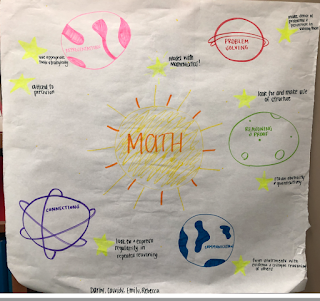Math Applet/App
NCTM Illuminations Fraction Models url: https://www.nctm.org/Classroom-Resources/Illuminations/Interactives/Fraction-Models/ Objectives, Concepts, Relationships Fraction Models is a tool that displays all the ways fractions can be expressed. It is a great way to explore fractions and develop a deeper understanding of them. It will show you a fraction as a fraction, a mixed number, a decimal, a percent, and visually in a portioned drawing. Students can manipulate the numerators and the denominators. This resource is for 6th-8th grade. The level of complexity of the fractions can be adjusted to match students level. Evaluation of App The app is very easy to manipulate. It is clear and visually appealing. Benefits/Challenges This app is a great way to have students explore fractions and gain a deeper understanding of them. This app could also be translated easier to a reference/notes sheet to help struggling students. One thing I wish this app did was allow students t
